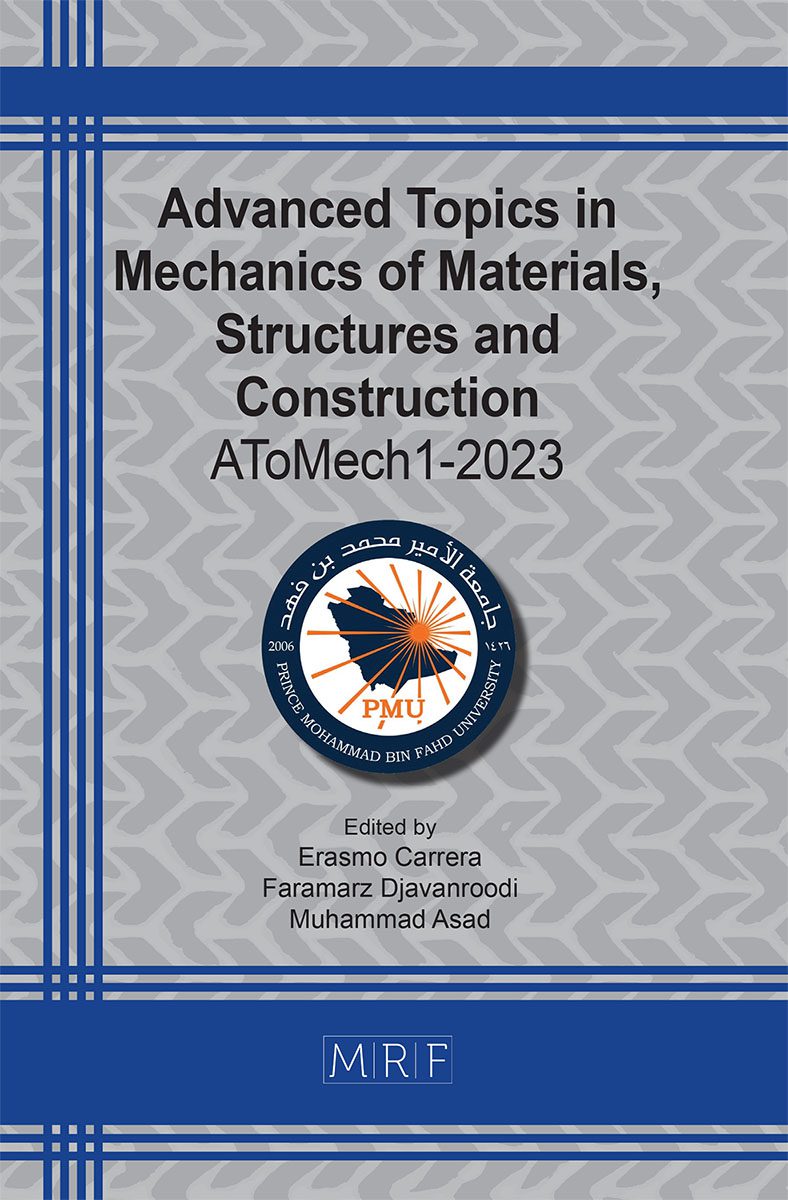Analyzing the electromagnetic forming process of SS304 sheet using AA6061-T6 driver through a fully coupled numerical model and experimentally validation
Zarak Khan, Mushtaq Khan, Faramarz Djavanroodi, A Samad Danish
download PDFAbstract. Driver-based electromagnetic forming (EMF) is a process that uses electromagnetic forces to form metal components into a desired shape. The process involves the use of a conducting driver metal, which is driven by an electromagnetic coil that generates a high-frequency, high-amplitude current. The driver sheet pushes the nonmagnetic sheet metal workpiece against a die causing it to be deformed into the desired shapes. EMF is particularly useful for forming complex shapes and for creating precise forms with minimal material loss. Applications of EMF include the formation of aerospace and automotive components, medical devices, and other products that require precise shaping and minimal material waste. This research focuses on the driver-based electromagnetic forming of Austenitic Stainless Steel (SS304) sheets using Aluminum alloy (AA6061-T6) as a driver. The analysis includes the numerical results of the magnetic field, Lorentz force, sheet deformation and velocity at four points on the sheet profile. The study also compares the numerical results to experimental measurements of the sheet profile. The study found that the numerical results were in good agreement with the experimental results.
Keywords
Electromagnetic Forming, AA6061-T6 Driver, SS304 Workpiece
Published online 8/10/2023, 8 pages
Copyright © 2023 by the author(s)
Published under license by Materials Research Forum LLC., Millersville PA, USA
Citation: Zarak Khan, Mushtaq Khan, Faramarz Djavanroodi, A Samad Danish, Analyzing the electromagnetic forming process of SS304 sheet using AA6061-T6 driver through a fully coupled numerical model and experimentally validation, Materials Research Proceedings, Vol. 31, pp 806-813, 2023
DOI: https://doi.org/10.21741/9781644902592-81
The article was published as article 81 of the book Advanced Topics in Mechanics of Materials, Structures and Construction
![]() Content from this work may be used under the terms of the Creative Commons Attribution 3.0 license. Any further distribution of this work must maintain attribution to the author(s) and the title of the work, journal citation and DOI.
Content from this work may be used under the terms of the Creative Commons Attribution 3.0 license. Any further distribution of this work must maintain attribution to the author(s) and the title of the work, journal citation and DOI.
References
[1] V. Psyk, D. Risch, B. L. Kinsey, A. E. Tekkaya, and M. Kleiner, Electromagnetic forming – A review, J. Mater. Process. Technol., May 2011, vol. 211, no. 5, pp. 787–829. https://doi.org/10.1016/j.jmatprotec.2010.12.012
[2] Q. Cao et al., Investigation of the Lorentz-force-driven sheet metal stamping process for cylindrical cup forming, J. Mater. Process. Technol., 2019, vol. 271, pp. 532–541, https://doi.org/10.1016/j.jmatprotec.2019.03.002
[3] L. Qiu, Y. J. Yu, X. P. Nie, Y. Q. Yang, and P. Su, Study on material deformation performance and electromagnetic force loading in electromagnetic tube expansion process, Trans. China Electrotech. Soc., 2019, vol. 34, no. 2, pp. 212–218.
[4] Q. Cao et al., Electromagnetic attractive forming of sheet metals by means of a dual-frequency discharge current: design and implementation, Int. J. Adv. Manuf. Technol., 2017, vol. 90, no. 1, pp. 309–316.
[5] Q. Xiong et al., Design and implementation of tube bulging by an attractive electromagnetic force, J. Mater. Process. Technol., 2019, vol. 273, p. 116240.
[6] M. Kamal and G. S. Daehn, A uniform pressure electromagnetic actuator for forming flat sheets, J. Manuf. Sci. Eng. Trans. ASME, Apr. 2007, vol. 129, no. 2, pp. 369–379. https://doi.org/10.1115/1.2515481
[7] D. A. Oliveira, M. J. Worswick, M. Finn, and D. Newman, Electromagnetic forming of aluminum alloy sheet: Free-form and cavity fill experiments and model, J. Mater. Process. Technol., Dec. 2005, vol. 170, no. 1–2, pp. 350–362. https://doi.org/10.1016/j.jmatprotec.2005.04.118
[8] Y. U. Haiping, L. I. Chunfeng, and D. E. N. G. Jianghua, Sequential coupling simulation for electromagnetic-mechanical tube compression by finite element analysis, J. Mater. Process. Technol., Jan. 2009, vol. 209, no. 2, pp. 707–713. https://doi.org/10.1016/j.jmatprotec.2008.02.061
[9] L. Qiu et al., Analysis of electromagnetic force and experiments in electromagnetic forming with local loading, Int. J. Appl. Electromagn. Mech., 2018, vol. 57, no. 1, pp. 29–37.
[10] Z. Khan, M. Khan, S. H. I. Jaffery, M. Younas, K. S. Afaq, and M. A. Khan, Numerical and experimental investigation of the effect of process parameters on sheet deformation during the electromagnetic forming of AA6061-T6 alloy, Mech. Sci., Oct. 2020, vol. 11, no. 2, pp. 329–347. https://doi.org/10.5194/ms-11-329-2020
[11] M. Kamal, J. Shang, V. Cheng, S. Hatkevich, and G. S. Daehn, Agile manufacturing of a micro-embossed case by a two-step electromagnetic forming process, J. Mater. Process. Technol., 2007, vol. 190, no. 1–3, pp. 41–50.
[12] S. Golowin et al., Application of a uniform pressure actuator for electromagnetic processing of sheet metal, J. Mater. Eng. Perform., 2007, vol. 16, no. 4, pp. 455–460.
[13] S. Ouyang et al., Investigation of the electromagnetic attractive forming utilizing a dual-coil system for tube bulging. J Manuf Process 49: 102–115. 2020.
[14] L. Chen, Y. Wang, T. Ben, X. Yang, X. Zhang, and Z. Wang, Waveform conditioning problems of nanocrystalline alloys under one/two-dimensional high-frequency magnetization, IEEE Trans. Appl. Supercond., 2018, vol. 28, no. 3, pp. 1–5.
[15] Z. Khan, M. Khan, S. H. I. Jaffery, M. Younas, and A. Khan, Numerical and experimental investigation of fully-coupled and uncoupled finite element model for electromagnetic forming of Aluminium Alloy Al 3014, in IOP Conference Series: Materials Science and Engineering, 2020, vol. 999, no. 1, p. 12008.
[16] H. G. Noh, W. J. Song, B. S. Kang, and J. Kim, 3-D numerical analysis and design of electro-magnetic forming process with middle block die, Int. J. Precis. Eng. Manuf., 2014, vol. 15, no. 5, pp. 855–865. https://doi.org/10.1007/s12541-014-0409-7































